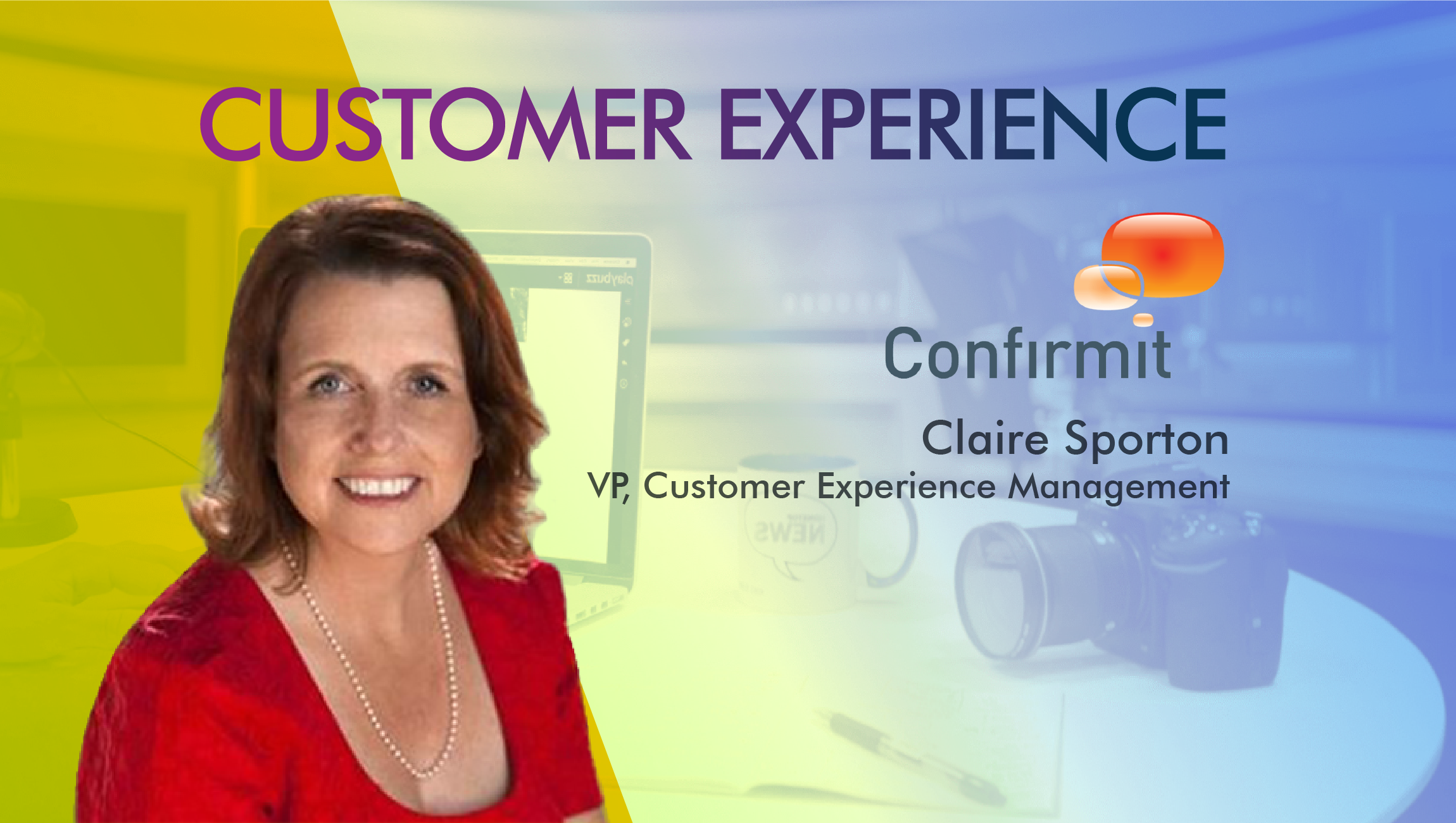Claire Sporton
SVP, Customer Experience Innovation, Confirmit
Technology can be used to measure the quality of both – Customer Experience and Customer Engagement. To dive deeper into the world of marketing technologies created to deliver better customer experiences along the buyer’s journey, we spoke to Claire Sporton, SVP, Customer Experience Innovation at Confirmit.
Html code here! Replace this with any non empty text and that's it.
 Tell us about your role at Confirmit and the team/ technology you handle.
Tell us about your role at Confirmit and the team/ technology you handle.
I am the Senior Vice President, Customer Experience Innovation at Confirmit. I’ve actually just moved into this role after seven years of working closely with Confirmit’s clients to help them define and build their Customer Experience (CX) programs. I have a real passion for building truly customer-centric cultures that inspire change and deliver measurable business improvement. The exciting thing about this new position is that I can focus on driving forward the discipline of CX management and ensuring that Confirmit provides the technology and expertise that organizations need to empower and inspire everyone across the organization to do the right thing.
What are the major differentiators for marketing to deliver ‘customer engagement’ and ‘customer experiences’? How do you manage both using marketing technologies?
There is a key difference between customer engagement and customer experiences. Customer Engagement is the outcome that we are all looking for – customers (or clients) who “buy again”, recommend us to others and truly partner with us. Customer Experiences are what will drive the level of engagement we achieve. Technology can be used to measure the quality of both – how engaged your customers are with your brand and the quality of their experience with you. We would look to measure the customer experience through;
- Direct feedback from the customer themselves through surveys using many different channels
- Indirect feedback through social media or other communications such as inbound email
- The perspective of the internal team
- The actions and behaviors of the customer such as the number of calls to the contact center or if they renewed their contract.
For the most part, a positive customer experience can drive customer engagement, whereas a poor customer experience can cause customer engagement to plummet. With technologies like Confirmit Horizons, businesses can manage all aspects of their CX programs from ideation, to execution, to follow through and more.
What are the core tenets of Confirmit Horizons? How could businesses benefit from this platform at a B2B level?
Confirmit Horizons is an end-to-end solution that allows businesses to seamlessly manage their CX programs – including Voice of the Customer, Voice of the Employee and insights from other key groups, such as partners. We are able to capture feedback through any channel (web, telephone, mobile devices etc.) and can provide advanced analytics, including text and social analysis, to help uncover business-critical insights. Most importantly, we can help clients identify the right action to take – whether that’s at a strategic, tactical or individual level.
For B2B organizations, the challenge of understanding the customer experience is magnified because they have fewer customers each of whom is worth a significant amount to the company. It’s also much harder to get a true picture of the health of an account because of the complex nature of the relationships which include multiple people on both the vendor and customer side. The great thing with Confirmit Horizons is that businesses can capture the view from all perspectives – gaining feedback from users, decision-makers, and influencers at the client side, and allowing employees such as Account Managers and Customer Success teams to provide their view on the health of an account. Confirmit Horizons can bring all those views together to give an Account Manager a clear view of the level of risk within an account, and provide the guidance on the steps they need to take to secure future business.
Do you see a gradual convergence of marketing technologies towards delivering better customer experiences along the buyer’s journey?
Absolutely! As more and more companies focus on understanding the customer experience at key points in their journey, businesses are getting better at finding the right technology to support their customers. One of the key issues with CX is that people are now overwhelmed by the sheer number of surveys they receive, and response rates are taking a hit. Smart companies are learning to use a wider range of sources to help them understand the customer journey without asking endless questions. For example, using financial and operational data to provide context to feedback, or harnessing text and social analytics to reduce the number of questions they ask. The challenge then is how to bring together the silos of information that are probably available across your organization and provide your internal teams with the insights that they need in a way that will inspire them to do something differently.
Additionally, with advancements in video technology, companies are able to capture more insights, many of which are more candid and telling, than traditional surveys.
What are major pain points for marketers in leveraging employees to drive Digital Transformation at an organization level?
Digital transformation and the push to digital is a key focus for many organizations, and often getting employees on board with the process is the greatest challenge. It can be seen by employees as a threatening cost saving, rather than a positive customer experience initiative, but as more and more consumers prefer digital channels, this mindset has to change. Both in-store and contact center teams can view channels like apps and the website as something that competes with their role – either putting their position in danger or for sales teams, potentially reducing their store’s success or their own commissions.
One retailer took a two-level approach to getting that employee support. Firstly, training their in-store teams to be comfortable using the website, and giving them access to it on the shop floor so they can share the view with customers. They also built a process so that web orders within their store’s geographic region were counted within sales for that store, removing concerns about web cannibalizing local results.
Another useful approach is to understand why customers are resisting digital transformation and continue to use a contact center. Here, frontline can be used to ask customers why they called the contact center, understand the reasons and report back to the business to help remove the roadblocks that undermine digital transformation initiatives.
What are your predictions on the state of ‘Voice of Customer’ technologies in 2018? How much of that state would be influenced by AI/ML adoption?
Looking into the far horizon, the survey appears to be phasing out, but long live the conversation – as we will always need reflective feedback! Of course, companies will continue to send out surveys, but they will slowly change as we move forward. However, we need to embrace the changes we have available via technology to create a more engaging survey to be more creative and more visual. Customer expectations are changing rapidly and we all need to keep up.
In 2018, text analytics will continue to make great strides as a way to decipher social media sentiment. Between Facebook, Twitter, Yelp and numerous other review sites, customers are proactively and candidly sharing opinions on a regular basis—and thanks to advancements in text analytics, companies can get closer to those insights.
More companies will be testing video integration as a way to collect feedback in 2018 and we will continue to see different use cases across industries.
As far as AI goes, the truth is, it’s still in its awkward teenager phase with much room for refinement and overall improvement, and it’s frankly not living up to all of the hype just yet but huge potential. When it comes to surveying, AI can help with the answers, but we still need to ask the right questions.
Thanks for chatting with us, Claire.
Stay tuned for more insights on marketing technologies. To participate in our Tech Bytes program, email us at news@martechseries-67ee47.ingress-bonde.easywp.com











